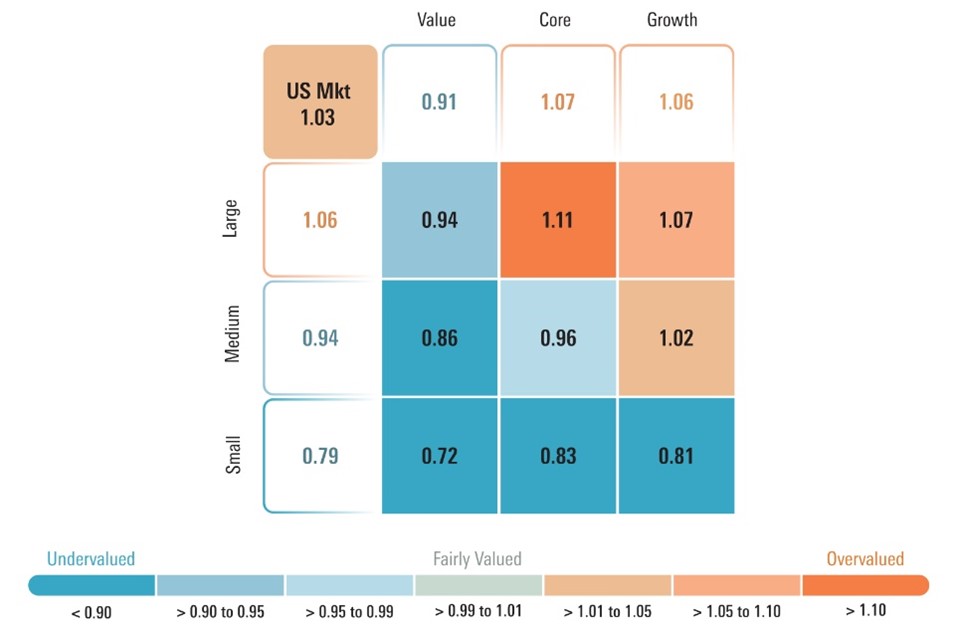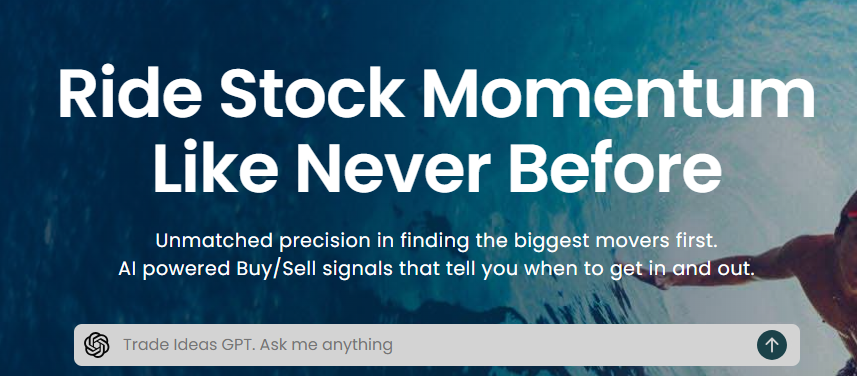The ability to customize strategies is an essential characteristic of AI trading platforms that predict and analyze stocks that allow users to adapt the platform to their specific trading goals, risk tolerance, and market conditions. A platform with a variety of customization features will enhance your trading. Here are the best 10 ways to evaluate the ability of platforms to modify their strategies:
1. Evaluate Pre-Built Strategy Templates
Varieties of Templates: Find out whether the platform you are using has templates pre-built for different trading styles (e.g. Day Trading, Swing Trading, Long-Term Investing).
Utilizability: Find out how easily these templates can be altered to meet your needs.
Performance history: Find out if the platform offers historical performance statistics on the an already-built strategy.
2. Assess Customized Strategy Creation
Drag-anddrop tools: Look out for platforms that have user-friendly drag and drop interfaces for customizing strategies.
Coding options: For users who are more advanced make sure the platform allows custom coding using a proprietary scripting language (e.g. Python, R).
Flexibility: Make sure the platform permits you to establish entry and exit rules as well as risk management parameters and other key components of your strategy.
3. Check for Backtesting Capabilities
Historical data: Check whether your platform provides sufficient historical data to allow strategies for backtesting.
Adjustable parameters: Ensure that you have the ability to alter parameters (e.g. timeframes, timeframes, indicators) when backtesting.
Performance metrics - Check to see if your software provides detailed performance indicators (e.g. the winning rate, Sharpe coefficient, or drawdown) for all backtested strategies.
4. Evaluate Real-Time Strategy Testing
Paper trading: Make sure the platform lets you simulate or test your strategies without risking any capital.
Live testing is a fantastic method of determining whether your strategy is able to be tested in the market in tiny amounts.
Real-time adjustments: Examine to determine if your strategy is able to be adjusted in real-time according to the market conditions.
5. Assess Integration with Technical Indicators
Indicator libraries: Make sure the platform includes a complete toolkit for technical analysis (e.g. MACD, RSI and moving averages).
Custom indicators you should be able to develop or import your own indicators that you can apply to your strategy.
Check the combination of indicators.
6. Check for Risk Management Tools
Stop-loss/take-profit: Ensure the platform allows you to set stop-loss and take-profit levels within your strategies.
Size of your position - Check for any guidelines you can follow (e.g. the fixed amount or an amount of your portfolio) for managing the risk.
Risk-reward Ratio: Make sure that the platform allows setting individual risk-reward levels to strategies and trades.
7. Evaluate Multi-Asset Strategy Support
Asset classes: Ensure that the platform offers strategies for a variety of asset classes.
Cross-asset Strategies: Find out whether it is possible to develop strategies that combine multiple asset classes.
Market coverage: Make sure that the platform has coverage for the markets you're interested in (e.g., US, international, copyright).
8. Evaluate Automation and Execution
Automated trading. Make sure the platform supports automated execution, based on previously defined strategies.
Types of orders: Make sure that the platform can execute various types of orders like stop, limit and market.
Latency - Check the platform's ability to execute trades on time and efficiently, particularly when employing high-frequency strategies.
9. Make sure you are using tools to optimize your strategy.
Parameter Optimization: Make sure whether the platform provides tools for optimizing strategies parameters (e.g. genetic algorithms, grid search).
Machine learning integration: Verify if the platform uses machine learning for refinement and optimization of strategies.
Scenario evaluation: Determine whether your platform can test various strategies to deal with different market scenarios, like bearish, bullish, or volatile.
10. Review Community Support and Feedback from Users
Feedback from users: Use reviews from users to assess the efficiency of the platform for customizing strategies.
Community forums: Check whether the platform has an active community in which users can discuss and share their custom strategies.
Support tools. Be sure to check for tutorials or webinars to help you create and optimize your strategies.
Bonus Tips
Trial period: Try the platform's customisation features with a free trial or demo.
Scalability is important. The platform should be able handle strategies that get more complicated as you trade.
Support for customers: Find out if the platform can provide support for issues related to strategy and questions.
These guidelines will assist you analyze the various customization options available to AI trading platforms that analyze and predict the performance of stocks. In this way you'll be able select one that is compatible with your goals in trading, which allows you to refine and apply your strategies. A platform that has powerful customization options will allow you to adjust to changing market conditions and improve the performance of your trading. Read the most popular inciteai.com AI stock app for blog info including trading with ai, investment ai, trading with ai, chart ai trading assistant, ai trade, AI stock, best ai trading software, best ai trading app, ai investing platform, trading with ai and more.

Top 10 Tips For Assessing The Risk Management Aspect Of Ai Stock Prediction/Analyzing Platforms
Any AI trading platform that predicts or analyzes stocks has to have risk management in place which is vital to protecting your capital and limiting losses. A platform with robust risk management tools will help you navigate volatile markets and make informed choices. Here are 10 suggestions on how you can evaluate the risk management capabilities of the platform.
1. Examine Stop-Loss and Take Profit Features
Customizable Levels: Make sure the platform lets you create individual stop-loss limits and goals for taking profits in your trading strategies or trades.
Find out if your platform supports trailing stops, which adjusts automatically when the market shifts towards you.
Check if your platform allows you to put stop-loss order that guarantee the closing of the trade at the price you have specified, even in volatile markets.
2. Useful Tools for Assessing Position Size
Fixed amount: Make sure your platform allows you to create positions based on an amount of money fixed.
Percentage: Check whether you can determine your positions' sizes in percentages of the total amount of your portfolio. This will allow you to manage risk in a proportional way.
Risk-reward ratio: Check whether the platform can set risk-reward ratios on individual strategies or trades.
3. Make sure you check for support for Diversification.
Multi-asset trade: Make sure that the platform supports trading across multiple asset classes (e.g. ETFs, stocks, options, forex) to help diversify your portfolio.
Sector allocation: Find out whether the platform offers tools to monitor and manage sector exposure.
Diversification of the geographic area. Examine whether your platform permits you to trade in international markets. This could assist in spreading the risk of geographic.
4. Controlling leverage and margins
Margin requirements - Ensure that the platform explains the requirements for margins clearly.
Limits on leverage: See if the platform allows you to set limits on leverage to limit the risk exposure.
Margin call notifications: Make sure that the platform sends out regular notifications on margin calls to stop account liquidation.
5. Assessment and Reporting of Risk
Risk metrics - Make sure that your platform has crucial risk metrics, such as the Sharpe ratio (or Value at Risk (VaR)), or drawdown (or value of the portfolio).
Analysis of scenarios: Make sure that the platform is able to simulate different scenarios of the market in order to evaluate risks.
Performance reports: Check whether the platform has comprehensive performance reports, which include the risk-adjusted return.
6. Check for Real-Time Risk Monitoring
Monitoring your portfolio: Make sure your platform provides live monitoring of your portfolio's risk exposure.
Alerts and notifications - Check that the platform is sending out real-time alerts when risk events happen (e.g. margin breaches and triggers for stop-loss orders).
Risk dashboards: Check if the platform offers customizable risk dashboards to provide an extensive overview of your risk profile.
7. Assess Stress Testing and backtesting
Test your strategies for stress: Ensure that that the platform you choose allows the testing of your strategies and portfolio under the most extreme conditions of the market.
Backtesting Check if the platform allows backtesting using data from the past to evaluate the risk and performance.
Monte Carlo: Verify the platform's use Monte Carlo-based simulations to evaluate the risk and modeling a range of possible outcomes.
8. Review Compliance Risk Management Regulations
Compliance with regulatory requirements: Make sure the platform is compliant with applicable regulation on risk management (e.g., MiFID II in Europe, Reg T in the U.S.).
Best execution: Verify that the platform is in line with best execution practices. The trades will be executed at the lowest price possible to minimize loss.
Transparency - Check to see if the platform discloses risks in a clear, transparent way.
9. Check for User-Controlled Parameters
Custom Risk Rules: Make sure you are able to define your own rules for managing risk (e.g. an amount that is the maximum loss per day, a maximum amount of tradeable position).
Automated Risk Controls Determine whether the system is able to automatically enforce the risk management policy in accordance with predetermined parameters.
Manual overrides Determine whether you are able to manually override the risk management system in an emergency.
Study Case Studies and User Feedback
User reviews: Read user feedback and analyze the effectiveness of the platform in managing risk.
Case studies: Look for case studies or testimonials which highlight the platform's capabilities in risk management.
Forums for communities. See if the platform is a thriving user community, where traders share risk management strategies and suggestions.
Bonus Tips
Trial period: You can make use of a demo or a no-cost trial to experience the risk management tools of the platform.
Support for customers: Make sure whether the platform provides the best support to issues or questions relating to the management of risk.
Educational resources: See whether the platform offers instructional resources or tutorials on risk management best practices.
The following tips can help you evaluate the features of risk management that are offered by AI platform for predicting or analyzing stocks. You'll be able to choose a platform to safeguard your investment while limiting possible losses. For trading success and to make sense of volatile markets, reliable risk management tools are vital. Check out the top free ai tool for stock market india for site info including AI stock trader, AI stock trader, how to use ai for copyright trading, AI stock analysis, best AI stock prediction, how to use ai for stock trading, ai in stock market, stock trading ai, chart ai trading, best stock prediction website and more.
